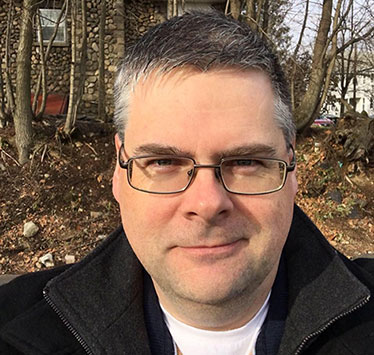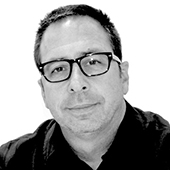Organizational Structure of Design at Capital One
Paul: How are user experience, customer experience, product design, and service design organized at Capital One today? Are experience design professionals part of a centralized service, working on distributed product teams, or in a hybrid structure? How is this working out? Have you learned any lessons that you’d like to share?
Richard: We operate using what Peter Merholz would call a Centralized Partnership model. ONE Design is the central home—through which almost all designers report. However, most of our funding comes from our business partners, and more than half of our designers vertically align with one of our six business units—Consumer Credit Cards, Consumer Banking, Consumer Financial Services, Commercial Banking, Small Business, and Enterprise Technology. They’re co-located with their Product and Technology partners and spend 95% of their time with them—acting as the third leg of the Product, Design, Technology stool. We feel that this gives us the right blend of practice development and support for our designers, while encouraging them to form strong business partnerships and develop subject-matter expertise.
Impact of UX Strategy on Products and Services
Paul: Are you planning to increase or further develop the impact of UX strategy on the products and services for which your organization is responsible? If so, what are some ways that you plan to do that?
Richard: We’re constantly striving to push design activities and methods further up the product-design chain, helping to ensure that we’re not just solving problems right, but solving the right problems. This becomes much easier as our teams reach a strategy tipping point—that point at which a team has enough resources to keep the product- and technology-execution teams happy, and they can start to devote a percentage of their time to working on more speculative, future-vision, strategic efforts. Most of our teams have reached this point, with Commercial Design the latest to get there.
Acquisition of Adaptive Path
Paul: Capital One made a high-profile acquisition of the design firm Adaptive Path. Is that acquisition still impacting the experience-design function at Capital One?
Richard: Oh, for sure! That acquisition was before my time at Capital One, but I know many of the Adaptive Path folks well, and the impact they have had on turbocharging our team’s journey has been tremendous! We’re still running the Adaptive Path-branded conferences and events, and our Service Design function—among others—has its roots in the acquisition.
The IA Community
Paul: You’ve been active in the Information Architecture community for a while, but your current role is in design leadership. How would you describe your professional evolution? What were the milestones and inflection points along the way?
Richard: Gosh, this is probably an article of its own. I don’t think I could do this question justice in a paragraph or two. Suffice it to say that I owe a huge debt of gratitude to the people in the IA community for the role they’ve played in my career successes to date!
Solving Complex Problems
Paul: When you are facing a very complex problem or ecosystem design, how do you get started? Do you have some standard processes you use?
Richard: I suspect my process is familiar to every designer reading this! I try to learn as much about the domain as possible—from every source, including both people and artifacts. I incessantly ask, Why? I tend to draw lots of diagrams and models. (You can find examples on my blog Mauvy Russet—though I haven’t updated them for a while.) Along the way, I seek out feedback and try to remain as receptive to it as possible!
Design Leadership
Paul: What do you look for when you are hiring design managers and other leaders?
Richard: Vulnerability. Attentiveness. Humor—mostly at themselves. There are other qualities, of course, such as technical expertise, the ability to influence, and vision. But I’ve found that the ability to laugh at oneself, the ability to be attentive—to really listen—and the humility and self-awareness to be vulnerable in front of others are great indicators of leadership success.
Paul: You have a book in the works. Can you tell us something about it?
Richard: Sure! Catherine Courage and I are writing a book for design leaders—and aspiring leaders—about how to integrate design into their organizations. It’s not a book about creating a design team—there are already excellent books about that—but a book about what needs to change in the rest of the organization to fully realize the power of design.
Keynote at UX STRAT USA
Paul: You are speaking at UX STRAT USA in Boulder in a few weeks. Tell us a little about your upcoming UX STRAT presentation, “Engaging the Organization for Design Impact at Capital One.”
Richard: I’ll be speaking about a topic I’ve long been passionate about: systems thinking—the marriage of design, business-process management, and experience quality. In a nutshell, I believe that the experiences we’re all striving to create are doomed to get worse, unless we augment the management systems and models our organizations use to keep themselves running.
Paul: Can you give us a few more details about your presentation?
Richard: Well, I don’t want to give too much away, but there is a well-established branch of business-management consulting called Enterprise Architecture, or EA, which forms the foundation of many of our organizations. Unfortunately, EA has a fundamental flaw—actually a gaping hole—that causes it to optimize for the wrong outcomes. Join me at the conference to find out what this gap is and how to correct for it!
Paul: I’m excited about your upcoming presentation at the UX STRAT USA conference in Boulder. What do you hope attendees will take away from your keynote address? Why should UXmatters readers attend?
Richard: Attendees will learn how to rule the world! Okay, maybe not—but they will learn how to have a lasting impact on their organization that goes way beyond typical product-design decisions like features and user interfaces. We need to use some of our design talent for making connections—among ourselves, with our organizations, and the way we work! 

